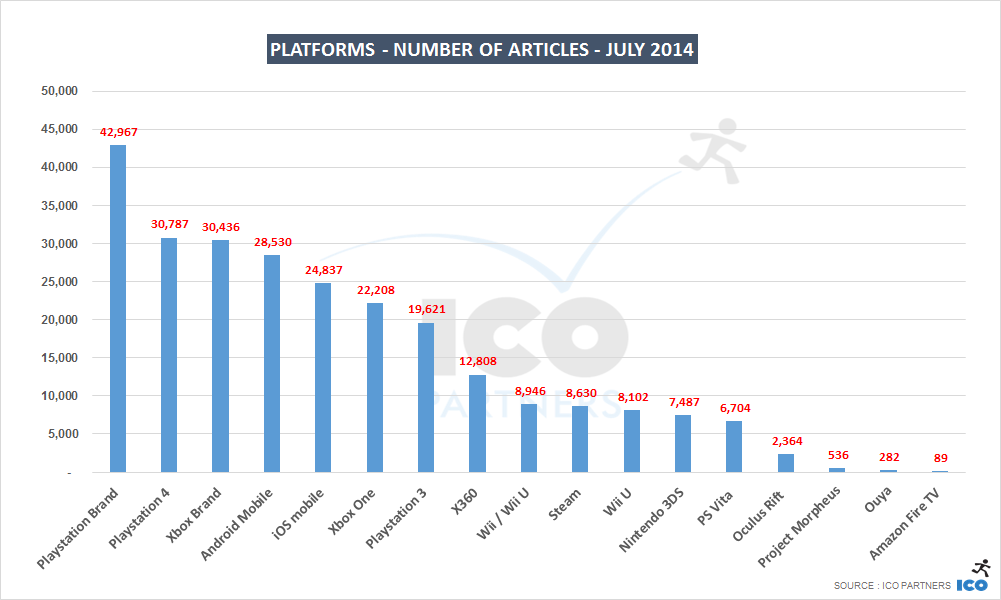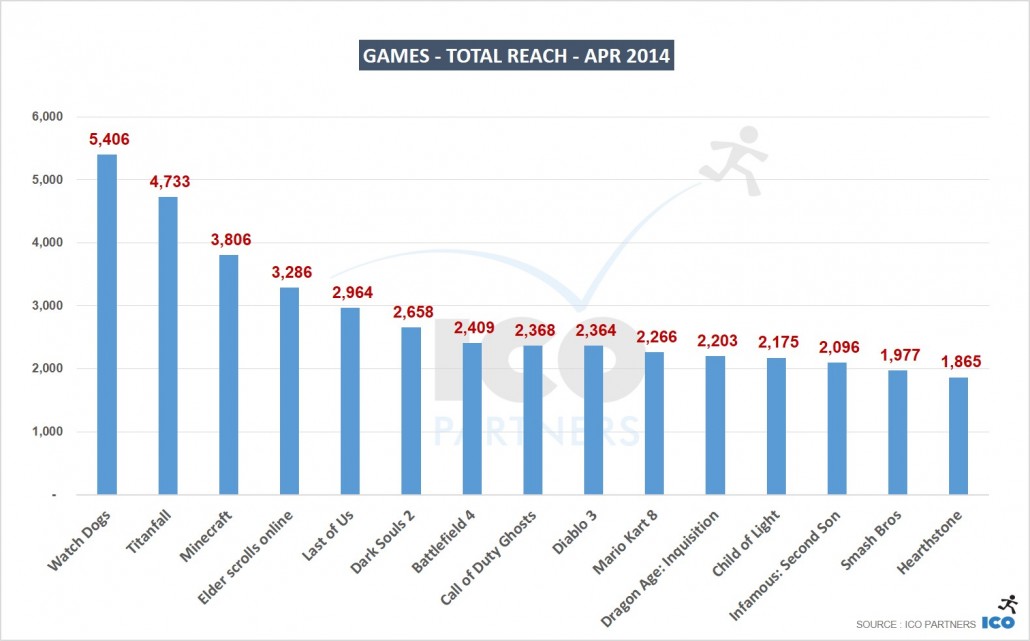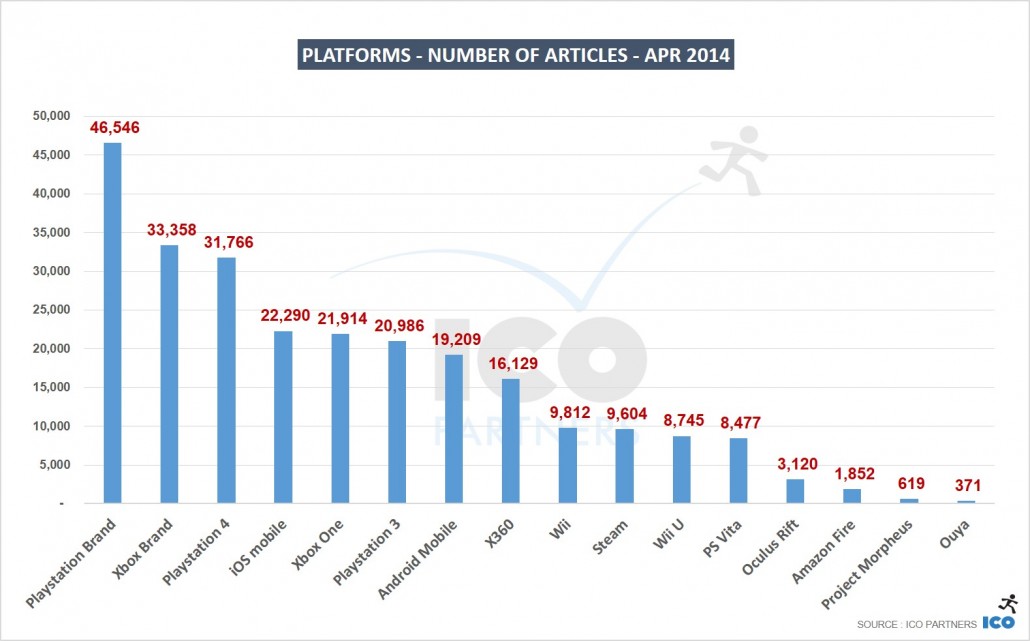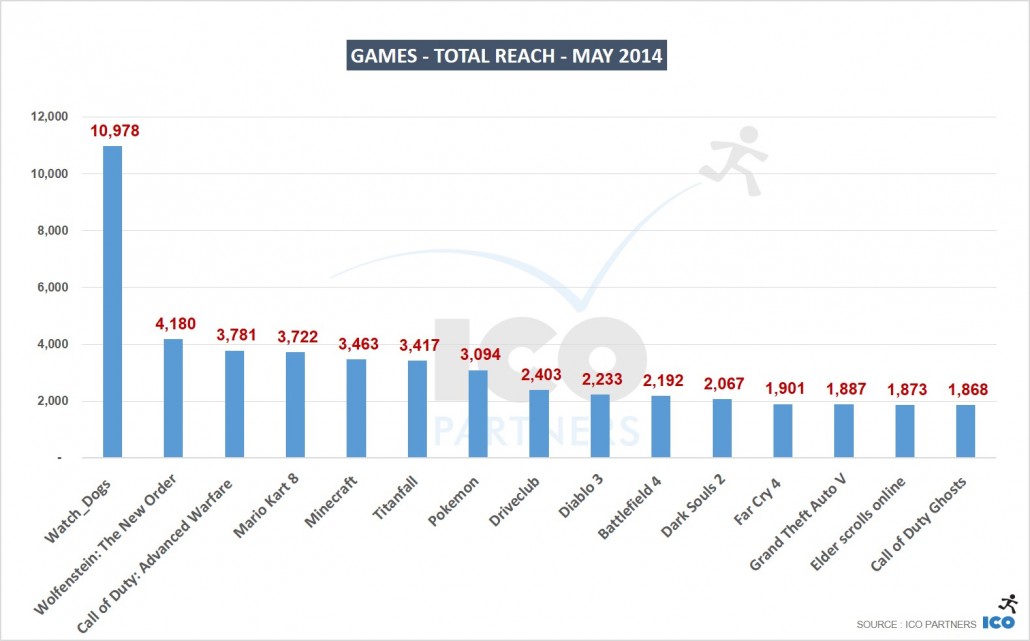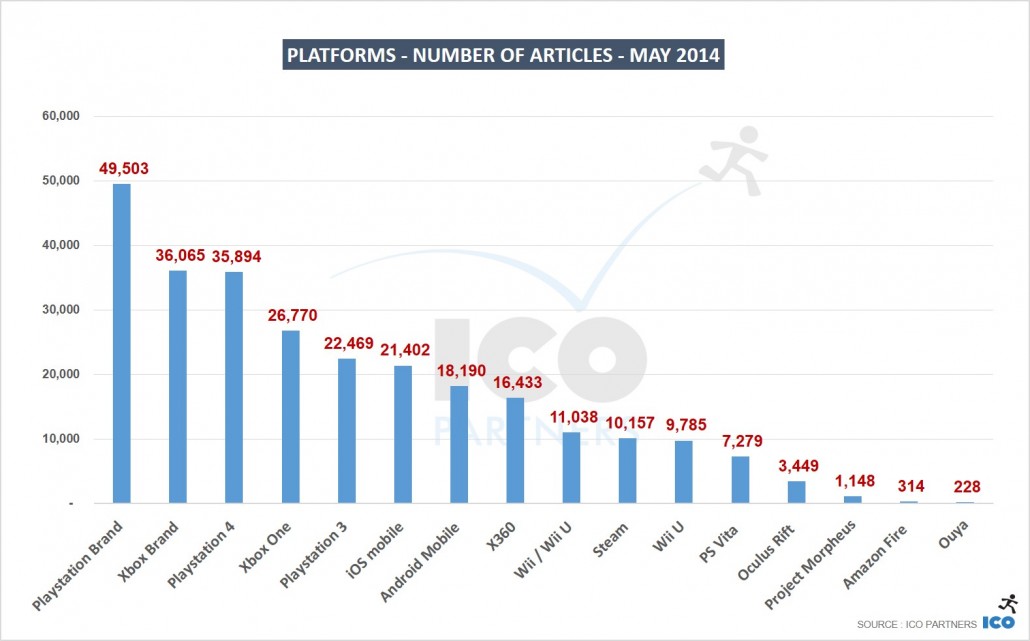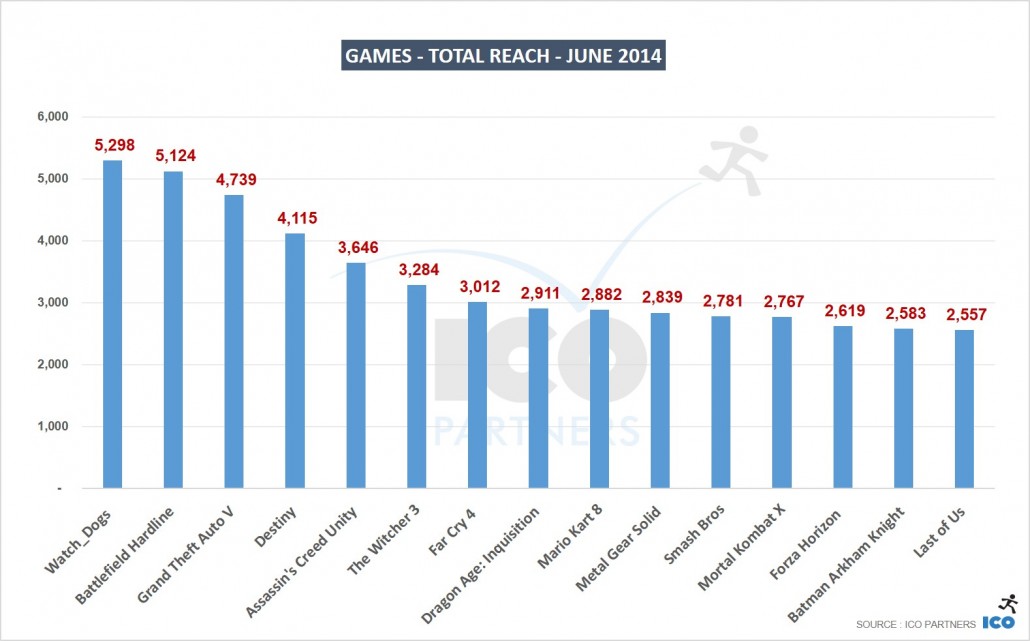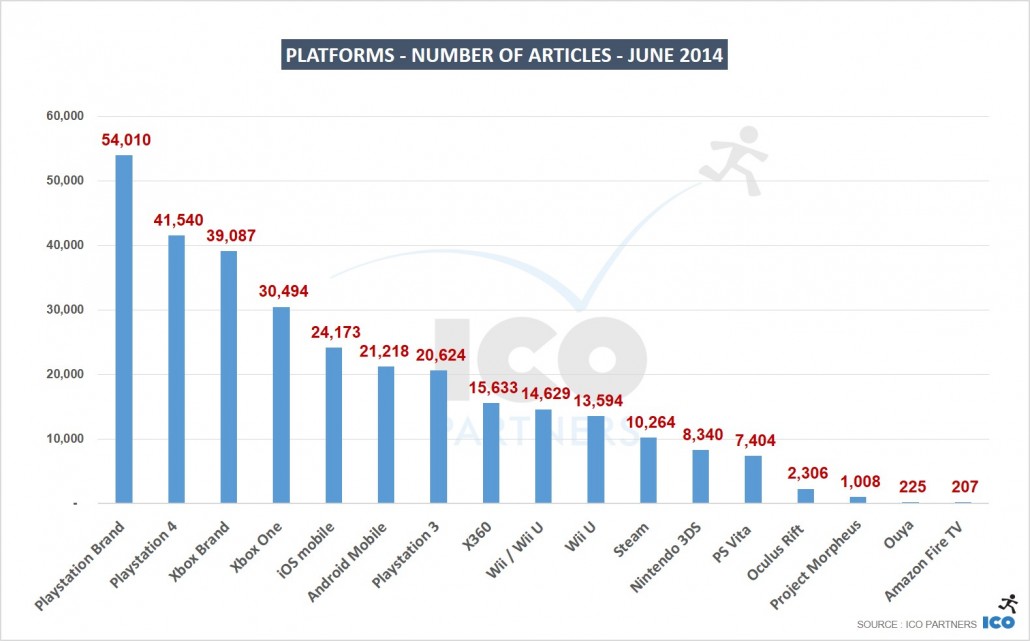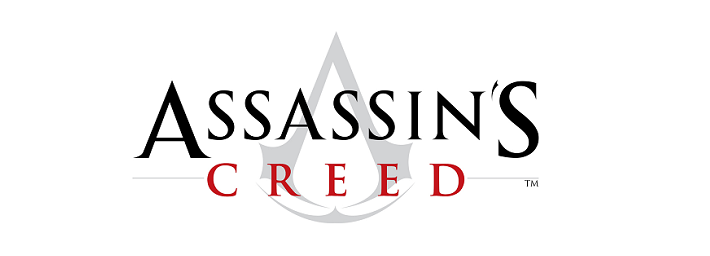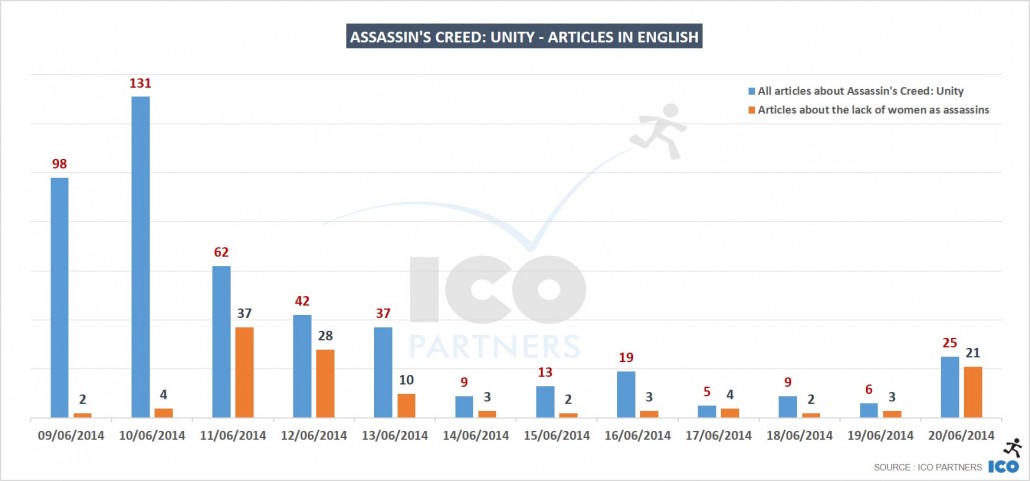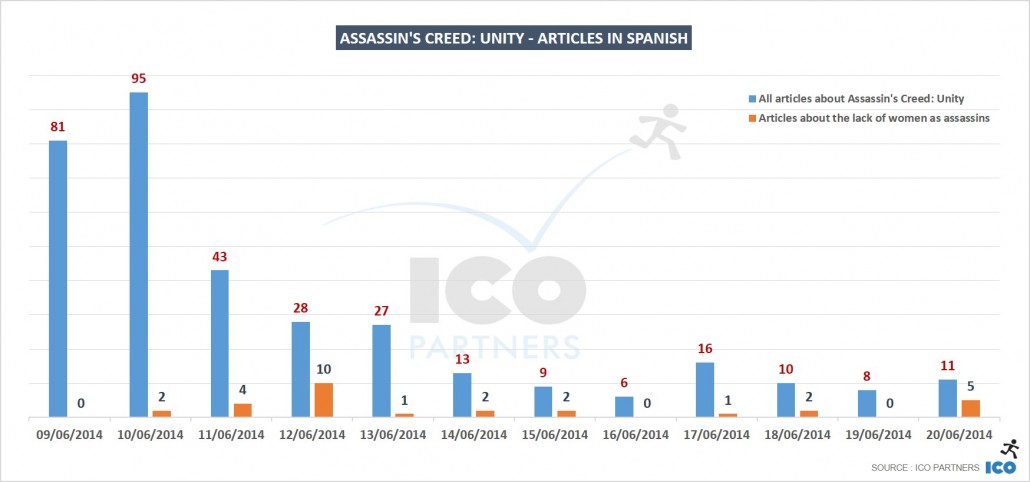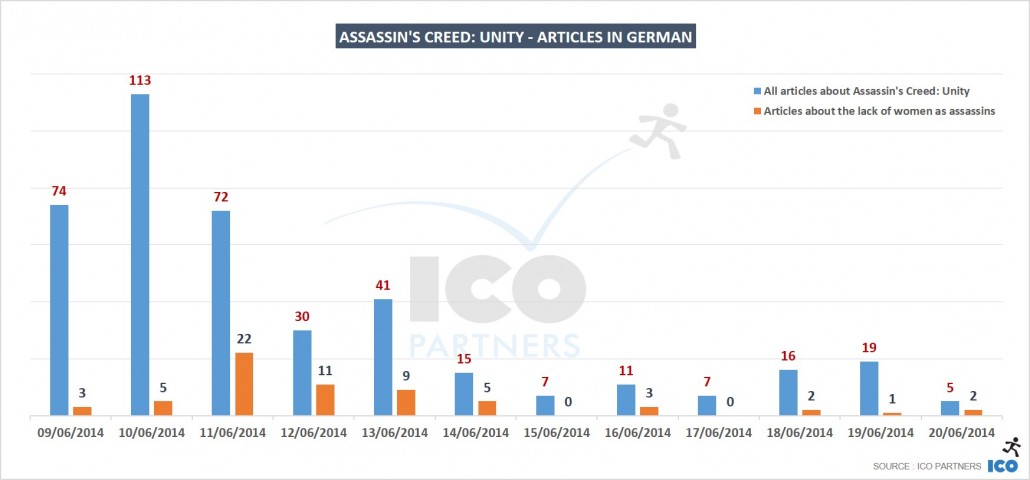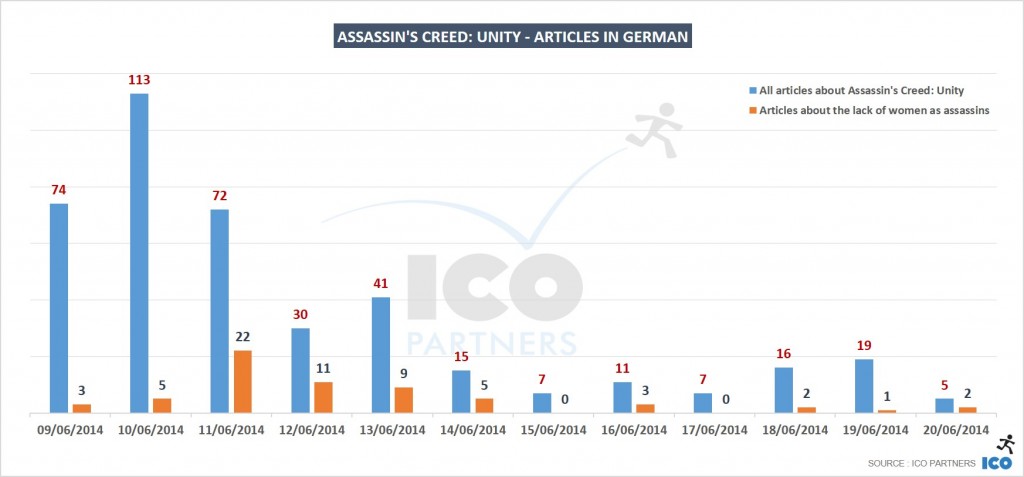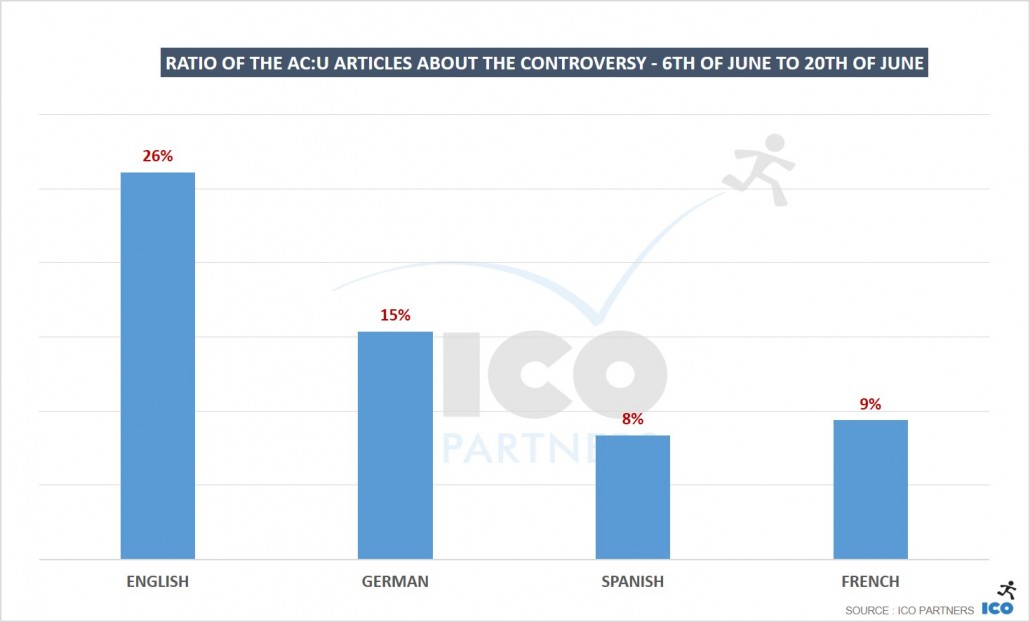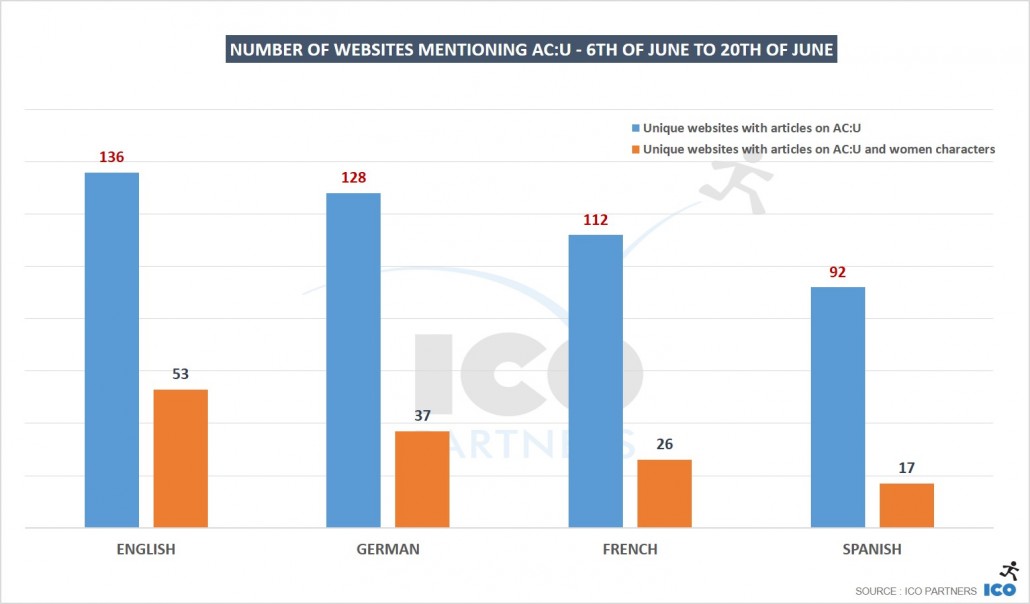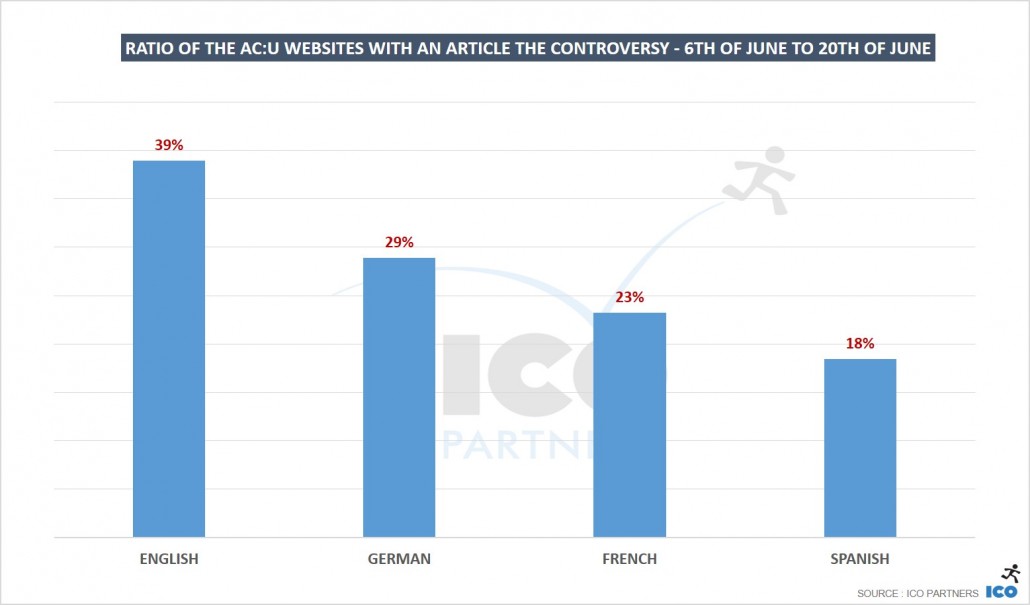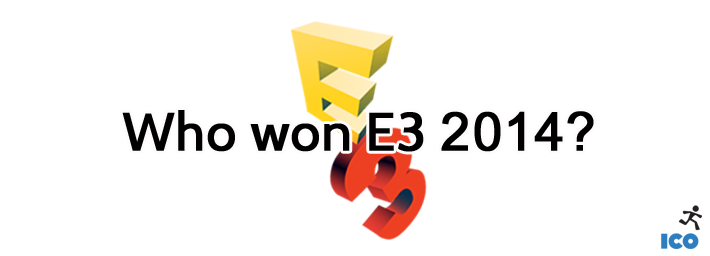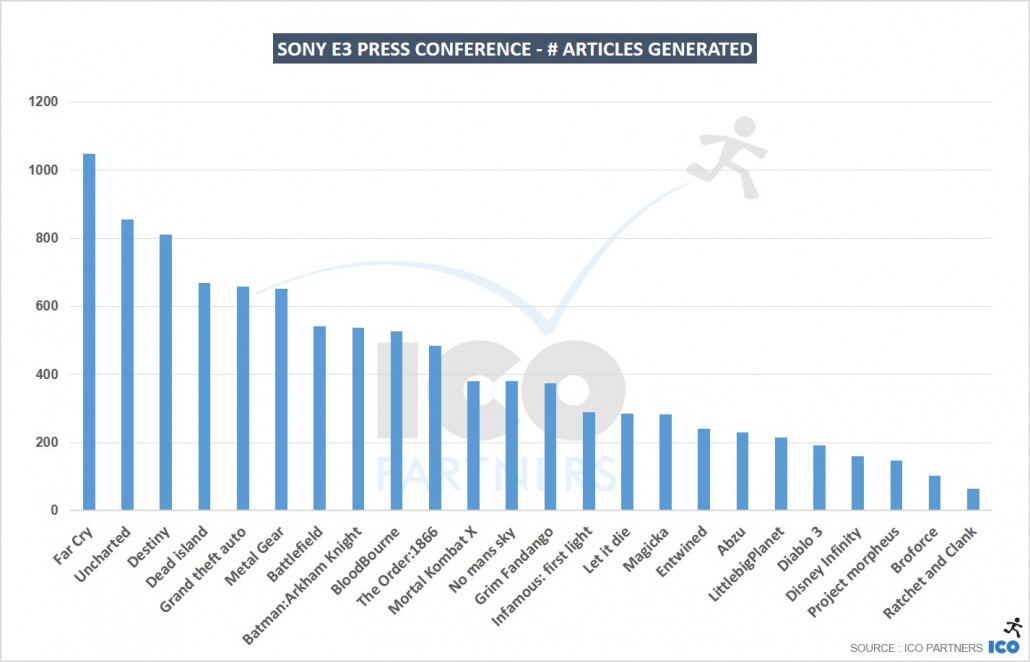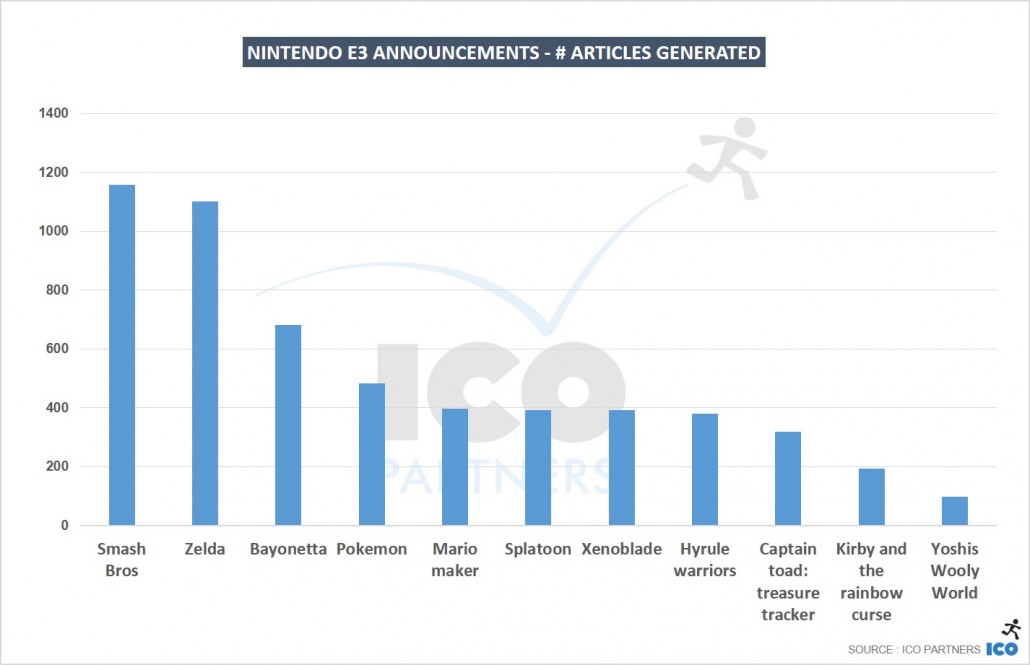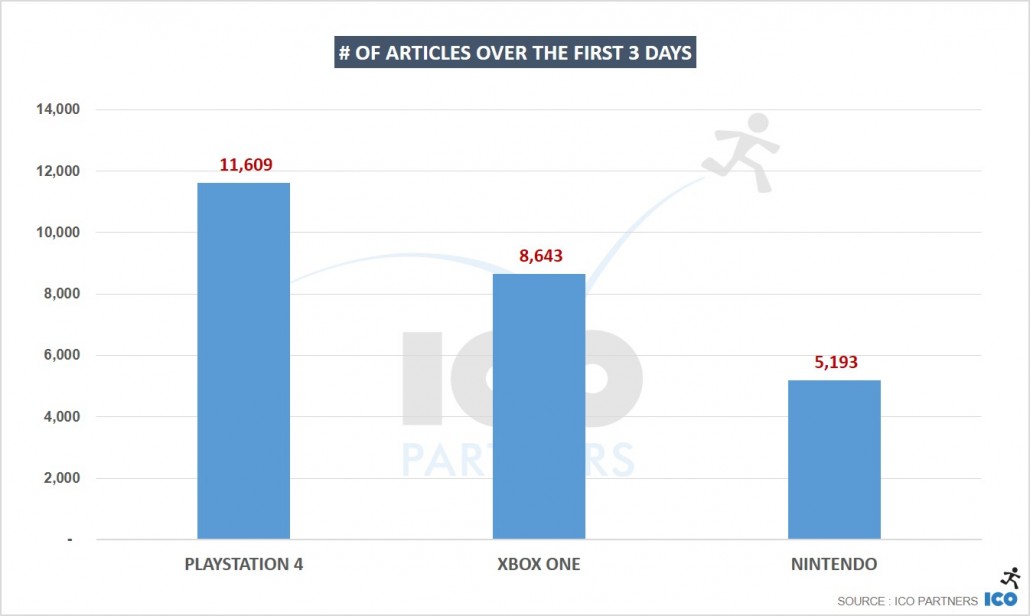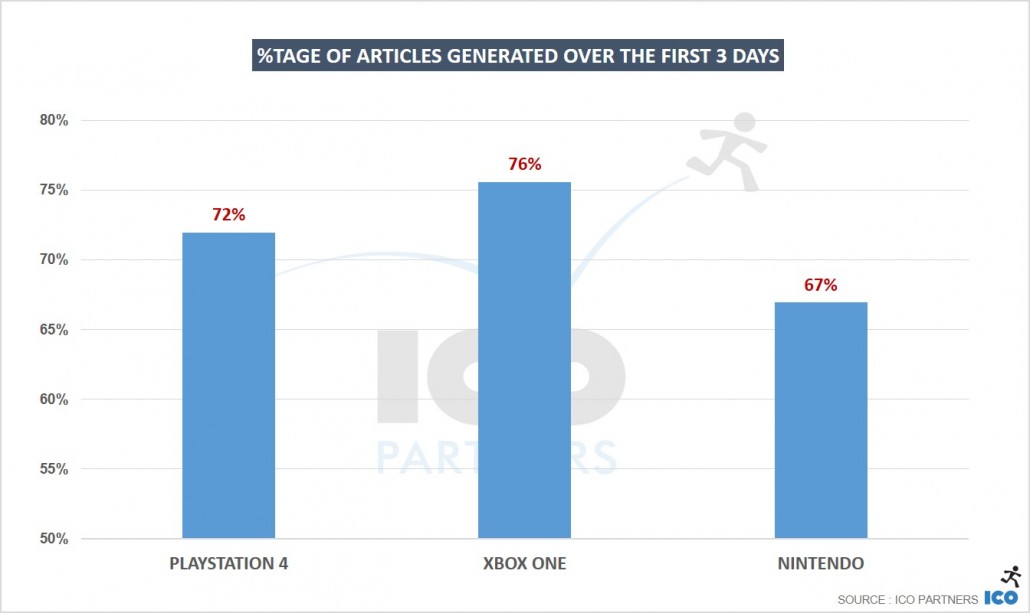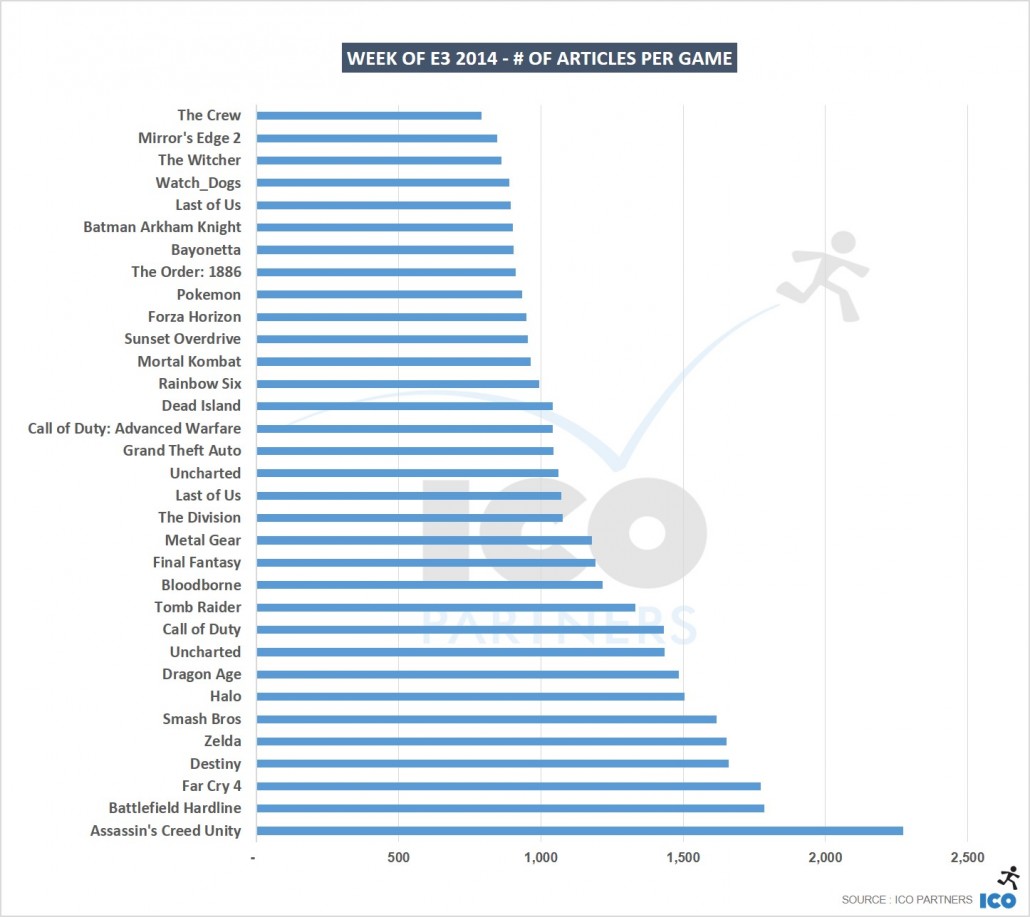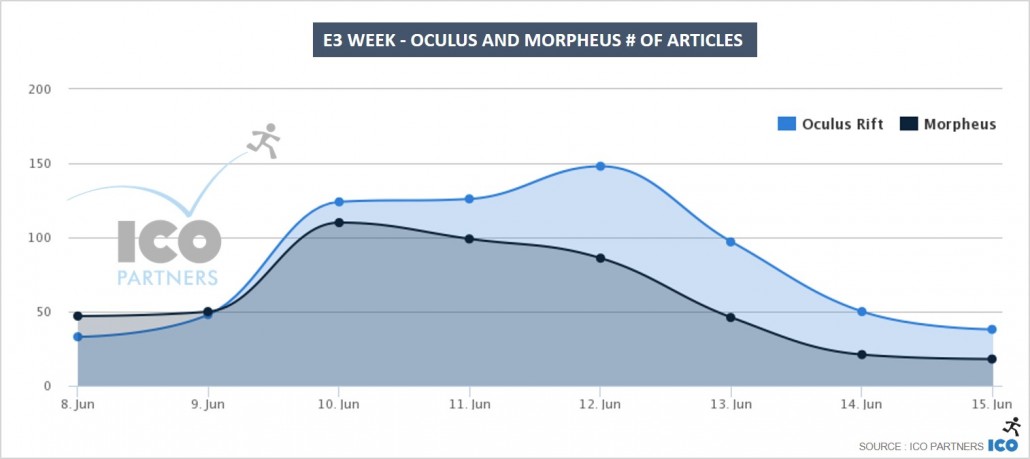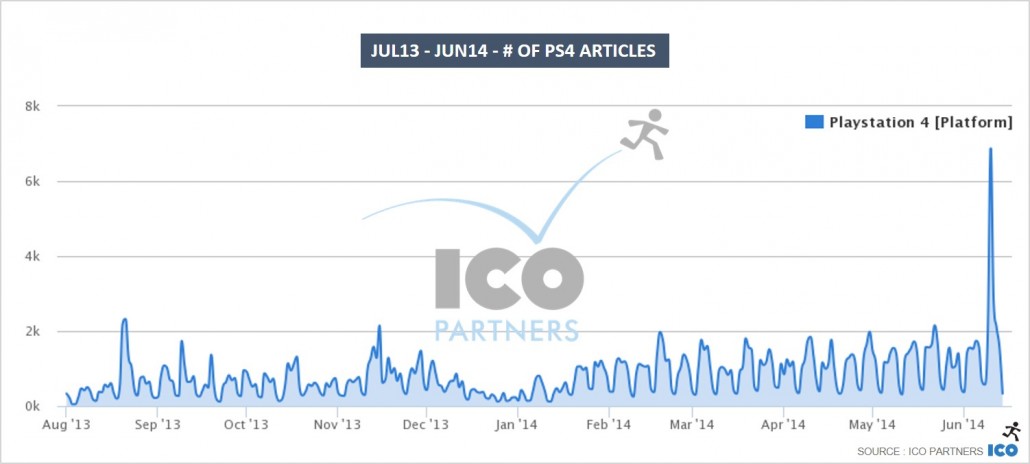I just came back from Korea (and the very well attended Gstar in Busan) so I’m trying to catch up on the monthly check on media mentions of video games. Let’s have a look at October and November. You can find more about the monitoring tool in the previous blog post. Read more
Going back to the monthly check on media mentions of video games, let’s have a look at both August (I neglected last time to check on specifically the impact of gamescom) and September. You can find more about the monitoring tool in the previous blog post. Read more
With gamescom behind us I now have some time again to look into the media trends in the games industry. I will do a writeup on the effect of gamescom itself, the way I did one for E3, but in the meantime here is the data for the month of July.
Platforms
Overall, we can see a drop in console mentions as June was benefiting from the extra media attention E3 brings. The same trends remain though, with the PS4 getting about 30% more coverage than the Xbox One. We can notice the effect of the Google I/O effect, taking it well above of iOS for the first time since I started tracking them.
Considering I was late on providing a report on April and May, I have decided to take on three months in one go,as well as a Q2 overview for 2014.
I’ve decided to do away with the usual disclaimer and rather direct people to read this post dedicated to how the tool works, its capabilities and its limitations.
April 2014
April was the ramp up month for Watch_Dogs and the follow-up for Titanfall. Elder Scrolls Online also had a very strong performance as a follow-up to launch.
May 2014
Watch_Dogs was, predictably, THE launch of the month of May. You can also see the effects of the Wolfenstein release, Mario Kart 8 and the first preview for CoD:AW.
The gap between Playstation 3 and Xbox 360 widened as the month went on. The Wii/Wii U is benefiting significantly from Mario Kart 8.
June 2014
The month of E3 – you can see the impact the event had with four of the top five games getting massive attention during the event. The overall number of articles was also significantly higher than what we saw in the previous months.
In a similar way, the extra focus that E3 brings was a majot benefit to consoles. An interesting point to note is the Playstation 4 alone received more mentions than the whole of the Xbox brand for the first time.
Q2 2014 numbers
I thought I would provide some overall comparison for the past 3 months, looking at all the games that made it into our top 15. It helps illustrate which titles are consistently getting a lot of attention against other top tier titles. Because of the way we track data, I decided to remove some games that had false positive in some of those months (Pokemon was one of them)…
Whenever I look at the data, I find the concentration of articles on so few titles surprising. That a single title gets more than twice the amount of coverage than any other games and three times more than every game outwith the top 5 is an interesting look into what the media is focusing on.
Following up on last week’s post on E3, there has been a number of comments about how much influence the controversy over a lack of female playable assassins in Assassin’s Creed: Unity had on the amount of coverage game received around E3.
I went into our tool and created a dedicated tracker to find articles discussing the topic. Because we are not talking about the title of a game here, which is usually fairly consistent between different languages, I had to stick to a smaller subset of languages here: English, German, Spanish and French.
I have used two trackers and compared them to one another:
– a tracker on Assassin’s Creed: Unity. It includes all the articles about the game.
– a tracker on Asssassin’s Creed AND female characters. There are probably a few false positives in there, but considering how prevalent the topic was during that period, they should be relatively minor. There is also no indication of whether an article was factual, negative or positive. It just states the topic was brought up.
So all the articles from the first tracker, also include the articles from the second tracker.
Here’s how it looks for each language:
For context, the Polygon article that started the discussion was published on the 11th of June (European time).
On the 20th of June, Insomniac released a video showing a female avatar dressed as an assassin in Sunset Overdrive to illustrate their answer to a fan’s question on if players can play as women in the game’s multiplayer. From the data, the stunt seems to have been picked up by mostly English speaking media, and to a lesser extent the German media.
This is more apparent when looking at the ratio of articles on the controversy for each language (it should be noted that some days have a low number of articles and this creates some noise in the chart – this can be seen especially on the 17th of June):
After running those numbers, it got me thinking a bit further. I am not sure those were really fair at representing the way the news was treated in different languages. So I ran another set of numbers, looking at the number of individual websites and how many mentioned the news:
Clearly, the English media have treated the topic in bigger numbers. There were a higher percentage of the media covering the game that mentioned the female characters, and there were more articles per outlet on that topic as well. On all metrics, this has been a bigger discussion point for those media.
I don’t have a specific conclusion that can be reached in regards to the discrepancy in coverage per language.
The ecosystems in which Europe’s media are evolving are considerably different from one another. The number of outlets, output volume of the different outlets and audience profiles are all different. You also see some topics becoming more or less trendy in different regions as key influencers comment on the topic – with media from the same region then competing for attention on some topics. What the data is providing though is an indicator of the impact the controversy had in the number of total articles it generated and its overall “weight”.
The comments on the E3 piece were coming mostly from English-readers working in the industry. Because of this, I suspect they got more heavily exposed to the controversy. Don’t get me wrong – it had a fair share of responsibility behind the fact that AC:U was ahead of other games in the E3 media coverage – but keeping in mind that the English coverage overall was 17% (that’s including all languages we track) of all the AC:U coverage, there is a perception that doesn’t represent an accurate picture.
Still, even if the actual percentage of controversy articles is 15% across those for 4 languages rather the 26% seen in English, that’s still almost one article in six bringing up this one topic.
And for the ones wondering, if we were pessimistic, and said about 20% of AC:U articles (as opposed to the observed 15%) were about the women characters in AC:U and they were removed, the game would still be ahead of Battlefield Hardline as the most talked about game of E3.
Before my general update about April/May, I want to talk about the current hot topic, E3. Below is an overview of last week and the impact of E3 on the media coverage of video games.
The usual disclaimer applies:
The tool I am using is far from perfect. It gets hits on false-positives, some terms are impossible to get hits on and it is somewhat dependent on how clever I am when I create the monitoring criteria for a specific game if the name is quite generic. The tool is also dependent on the alerts I have entered. There are some prominent games that can be absent, I try to add them as I go but I know I always miss some. As I am expanding that list now, do not take the stats as an “end all” proof that X game is totally ignored by the media.
I am only sharing the graphs showing the number of articles for a given topic – we are also using a weighted value based on the sites’ reach, but this time around I wanted to keep things simple. So what you see here is relevant about quantity, not necessarily quality. It is important to note that we purge the results coming from fansites (dedicated to one game) and content farms (that just repost other websites’ content). I am just sharing the current results because I feel they are interesting at illustrating the trend for [the week of E3].
[EDIT – the graph on the games were showing a few games twice (Uncharted and Call of Duty). We are currently tracking games in different ways, one of them is to track the brand name rather than the game name. I have fixed the graph to show the proper result for the game. In the case of Uncharted, the brand name was coming with extra restrictions to avoid false positives, so there were fewer results for it than for “Uncharted 4” that didn’t have any restrictions as the false positives are highly unlikely. Bonus – I have added FIFA 15 that I wasn’t tracking earlier.]
The press conferences
First order of business, I wanted to see the impact of the official press conferences and see their respective impacts on the games they are putting in the spotlight.
Because of the way they are set-up, I ignored the EA and Ubisoft conferences – their top titles had already been relayed at the manufacturers’ press briefings and while my methodology is not 100% perfect, for those, it would just not provide much insight.
Another important thing to have in mind is that I am using the time when the article was published to determine its dependency to the press conferences – and because they all happened at different times I tried to ponder the timings, but there is probably a good margin of error that you have to allow me here.
Sony / Playstation
Microsoft / Xbox
*Evolve is not an easy game to properly track – I am trying to avoid false positives and I might be a bit heavy handed on how I do it for now.
Nintendo / Wii
Comparing them
The percentage is relative to all the articles published over the week.
I wanted to see how front-loaded the coverage was for each platform. Nintendo, despite not having an on-site event, are still getting an incredible amount of coverage.
To give some perspective, if you look at the March analysis, Playstation was getting almost 4 times the same amount of coverage as Nintendo across its games and devices, and Microsoft close to 3 times the same amount of coverage. The concentration of attention given to the industry at this time is really helping them as they don’t tend to draw as much attention usually.
The other point it highlights for me is that their format to make their announcement is not less efficient than Sony’s or Microsoft’s, and it is a lot cheaper, with an underlying message that their event is as much for their audience as it is for the press – putting both at the exact same level.
On top of Microsoft being way more front loaded than Sony, the sheer volume of coverage is significantly in favour of Sony. In March, Sony had about 30% more coverage on the PS4 than the Xbox One was generating. For the E3 conferences, Sony got 34% more coverage (despite them going second and having a slight disadvantage in my methodology), and overall for the week, 41% more coverage.
So purely from a perspective of media exposure, it seems this E3 was a significant win for Sony over Microsoft.
This also provides us a very interesting benchmark for the event and the attention it gets. In a week, Sony attained half the amount of total coverage it would normally have in a month.
The whole week
All the data below was collected from Sunday the 8th of June to Sunday, the 15th of June. Weekends are traditionally incredibly slow days for video game media, so it should offer a proper snapshot of the E3 week in that regard.
Games
I have limited the list to the games that got the most coverage.
Clearly, a portion of the AC Unity coverage is also coming from the female assassin backlash/controversy and it would have been better without it.
FPS games are still getting a lot of the attention (with Call of Duty surprisingly lagging behind though), and Nintendo’s front hitters are also incredibly well covered with Zelda and Smash Bros ahead of some massive franchises such as Call of Duty, Halo and Tomb Raider.
Platforms
I almost feel bad about putting the Ouya in there. I had to actually check to see if they were indeed attending E3. They had more articles on Monday following up their interview with Polygon than on any day of E3 itself.
Morpheus and Oculus
Still pursuing my personal interest in the world of VR, I wanted to have a specific look at the media coverage that Oculus and Morpheus both got throughout the week. And with E3 being so much about consoles usually, I have to say I am impressed by the fact that Oculus kept ahead in terms of media attention – of course, if Sony had pushed its own device more heavily, it would be very different – but it is still an excellent performance and testimony to the brand that Oculus is building.
A year worth of data
I have started tracking media mentions for almost a year now, even though I have only started presenting and discussing this data quite recently. This project started a couple of weeks after E3 2013, so I sadly I cannot make any comparison between this and last year’s event. However, what I have is still a year’s worth of data and I wanted to share one last graph, showing the number of articles that mentioned the Playstation 4 every day, from the 1st of July 2013 to yesterday.
See if you can spot the following milestones: gamescom; launch of the console; Christmas; and E3 2014…


